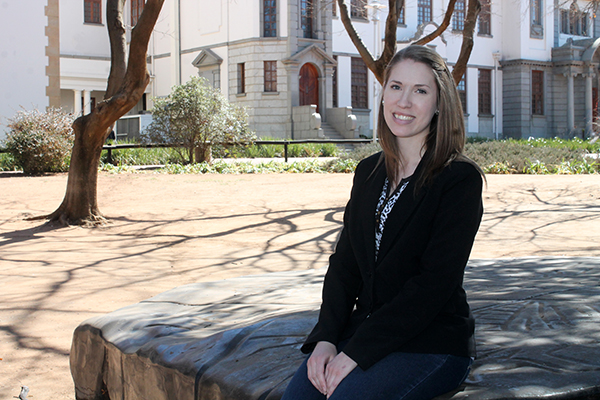Latest News Archive
Please select Category, Year, and then Month to display items
27 December 2019
|
Story Dr Cindé Greyling
|
Photo Supplied

KovsieInnovation at the UFS is bridging the gap between industry and academics with a powerful force. For too long, research remained an academic pursuit, with many innovative ideas stuck between the pages of a thesis – only to come alive during exclusive, short-lived conference proceeds.
KovsieInnovation
Recently, Gerard Verhoef, Director in the Directorate: Research Development (DRD), and his team from KovsieInnovation finalised their Innovation and Commercialisation Strategy in order to create a structured pathway for good ideas. The primary objective of KovsieInnovation – the UFS Innovation and Entrepreneurship Office – is to achieve sustainable growth in third-stream income from innovative research activities stemming from the UFS. “Potential successful ideas must be feasible, viable, and sustainable, and we formulated an eight-step plan to facilitate this,” Verhoef explains. Ultimately, the DRD wants to attract new and continuous research as a renowned academic knowledge partner that can foster, drive, and successfully commercialise innovative research activities; and in doing so, foster an entrepreneurial culture at the UFS.
Liquid Culture
One such success story is the development of Liquid Culture into a business of choice, supplying liquid yeast to breweries and bakeries. Christopher Rothmann and Dr Errol Cason are the driving forces behind this company that produces their sought-after and stable yeast product in the Department of Microbiology, Biochemistry and Food Biotechnology at the UFS. With world-class equipment and laboratories, they house one of the largest yeast-culture collections in the world.
Both Rothman and Dr Cason were home brewers for many years before starting to produce commercial batches. They believe it would not have been possible without the help of KovsieInnovation. This project was also one of the finalists in the National Entrepreneurship Intervarsity.
Christo Strydom Nutrition (CSN)
Another innovative way in which the UFS generates third-stream income via the DRD, is by partnering with already successful commercial products. One such example is the recent successful royalty agreement with CSN. With this transaction, the university unlocked its brand potential to the benefit of both the industry partner and the UFS. Quality assurance remains the key success factor for deals like this.
Humour a powerful tool to address serious issues
2017-12-06

Michelle Malan received a Dean’s medal from the Faculty of Humanities at the mid-year
graduation ceremonies for her Master’s degree.
Photo: Jóhann Thormählen
People, in most contexts, are more open to engage in serious issues such as politics and economics if it is presented in a humorous way. This makes humour a very powerful tool to address burning issues in our society.
These are some of the findings in the research of Michelle Malan, a part time lecturer in the Department of Linguistics and Language Practice at the University of the Free State (UFS).
How comedians and cartoonists use humour
The basic premise of her research, titled The Intersemiotic Translation of Humour, was to see how comedians and cartoonists take news stories and translate it into humour. She received the Dean’s medal for the best Master’s degree in the Faculty of the Humanities at the mid-year graduation ceremonies in June 2017.
“More specifically, I explored how the medium constrains potential meaning-making in cases of intersemiotic translation in which humour is constructed,” she says.
Cartoon vs a comic television show
According to her the medium in which a message is given, in this case comedy, definitely influences how one is able to form meaning from it. “For instance, a cartoon (visual medium) would have a different meaning-making potential than a comic television show.”
She also notes that one must understand the workings of humour, which includes the mediums in which it is presented, so that the intended humour does not do more harm than good.